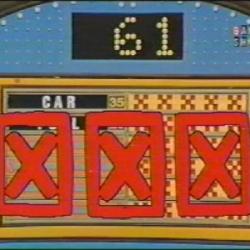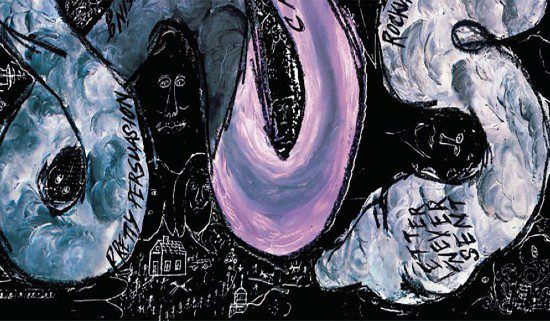My all-time favorite photo cutline from the Associated Press was for a picture of President Barack Obama and Pope Benedict XVI. It read: “Pope Benedict XVI (left) welcomes U.S. President Barack Obama (right) at the Vatican.”
It’s difficult to imagine a reader for whom the words “Pope Benedict XVI” and “President Barack Obama” are in any way meaningful while also requiring those “left” and “right” designations to tell them apart. I can’t imagine anyone looking at that photo and thinking, “Wait, is Benedict the black guy in the suit or the old white guy in the robe?”
But this is AP policy and a basic rule of newspaper journalism: Never assume that readers know something you haven’t explicitly told them.
For photo cutlines, that means identifying every person and clearly indicating who is who, even if it seems totally obvious. “Philadelphia Phillies first baseman Ryan Howard (left) follows through on a two-run home run as Atlanta Braves catcher Brian McCann (right) looks on …” Oh, so the guy swinging the bat is the batter and the guy in the catcher’s equipment is the catcher? OK, then. Again, if the reader doesn’t understand from the photograph itself who is the batter and who is the catcher, then nothing else about the cutline is going to make a lick of sense to them either. Anyone who needs to be told “right” and “left” in that photo is unlikely to know what is meant by “a two-run home run.”
But AP photographers always add those right and left designations because the rule is a good rule: Never assume that readers know something you haven’t explicitly told them.
AP’s reporters, unfortunately, don’t stick to this rule anywhere near as meticulously. Almost no reporters do anymore.
They follow the rule in some of its forms — scrupulously identifying the title of even the most well-known public officials on first reference, for instance — but utterly disregard it in many other circumstances.
And that’s understandable, because sticking to this rule can often seem clunky or heavy-handed — as in those cutlines above. An artful allusion becomes less artful when it has to be explained. In other contexts, it may be wholly appropriate to write:
“I am shocked … shocked,” the spokesman said, doing his best Claude Rains impression.
And it can seem laborious and inelegant, in the context of newspaper journalism, to have to render that:
“I am shocked, shocked,” the spokesman said, quoting a line from the 1942 film Casablanca, in which Claude Rains’ character ironically and insincerely feigns indignation.
Or it can make you feel almost like you’re insulting your readers’ intelligence. Think back to the 2008 presidential campaign, when an exhausted candidate Barack Obama told an Oregon crowd that “over the last 15 months we’ve traveled to every corner of the United States. I’ve now been in fifty … seven states? I think one left to go. One left to go. Alaska and Hawaii.”
When reporting on a gaffe like that it seems perfectly safe to assume that the readers of your newspaper know that there are, in fact, only 50 and not 57 states. But the rule says that you must never assume. The rule says that you must correct such misstatements by supplying the correct information as close to the misstatement as possible.
“I’ve now been in fifty … seven states?” Sen. Obama said. There are only 50 states.
That proximity matters — corrections further down in a story can get lost or cut or ignored by readers who never get that far. But placing the correction directly after the misstatement can come across as snarky, as though it’s set-up … punchline. And getting all that right — the correction itself, the proper placement, the proper tone — is a lot of work that can just seem unnecessary because, come on, be serious, who doesn’t already know that there are only 50 states? Can’t we just assume that readers already know that?
The rule says no. No you can’t. The rule says you can never assume that readers know something you haven’t explicitly told them. And it’s a good rule.
Let me give you an example as to why it’s a good rule, and why our failure to abide by it — while understandable — has had grim consequences.
A friend of mine works for another paper where he handled the birther story this week. The lede and first dozen or so grafs of the story were reaction from local tea partiers to President Barack Obama’s getting Hawaii to release the long form birth certificate to supplement the legal certificate they give every other Hawaiian citizen, and which Obama had already released to great fanfare back in June of 2008. The story mentioned that earlier release of the normal birth certificate, but only briefly and way, way down in the story. So he moved that vital piece of information up toward the top, closer to the many quoted assertions from the tea partiers that the president ought to have responded to their questions sooner. That got him in hot water with his bosses, who moved that information back down to the nether regions of the story because, he was told, he should assume that readers were smart enough to know that already.
The result was an article that allowed a false assertion — Obama never released this information before — to go unchallenged for more than a dozen paragraphs. That’s a violation of one rule (proximity between misstatement and correction) based on reasoning that violates another rule (never assume that readers know something you haven’t explicitly told them).* The result, in other words, was a story that elevated misinformation and diminished the correction — a story that will likely end up reinforcing the ever-mutating fantasies of birtherism and after-birtherism.
I don’t mean to pick on one reporter or one set of editors — this is a problem across the board. I think Christiane Amanpour is a top-notch journalist, but as David Folkenflik pointed out on NPR’s “All Things Considered,” she allowed the assertions of birthers to stand uncorrected in recent interviews:
Some television interviews recently – and there have been a bunch – notably failed to contradict Donald Trump or others casting doubt on where Mr. Obama was born.
NBC’s Meredith Vieira and ABC’s Christiane Amanpour acknowledged those remarks passively. Amanpour did not challenge the Reverend Franklin Graham when he said this…
Reverend FRANKLIN GRAHAM (President, Billy Graham Evangelistic Association): The president, I know, has some issues to deal with here. He can solve this whole birth certificate issue pretty quickly. I don’t know why he can’t produce that.
I would guess that Amanpour was thinking the same thing as those newspaper editors — that it was safe to assume that viewers already knew the truth, that it might seem to insult viewers’ intelligence to follow Graham’s false claims with a statement of the actual facts. But the result again is an interview that winds up reinforcing Graham’s bogus claims without ever challenging them.
If you’re the teacher of a class with 30 students and two of them fail the final exam, then you might conclude that those two students have failed to learn. If you’re the teacher of a class with 30 students and 20 of them fail the final exam, then you should probably conclude that you have failed to teach. That is the conclusion that newspaper journalists should be taking from the relentless barrage of polls showing that a substantial plurality of their readers believe many things that are demonstrably untrue.
If 5 percent of your readers aren’t sure what country the president was born in, then it’s possible to laugh at those wacky fringe-dwellers. When 35 percent of your readers aren’t sure, it means the newspaper is failing to do its job — and there’s nothing funny about that.
A simple step toward correcting that failure would be for us to go back to following our own rule: Never assume that readers know something you haven’t explicitly told them. That means that whenever a statement of incorrect information is quoted in the paper, it should be followed closely thereafter with an explicit statement of the correct information:
“I just got back from the state capital in Philadelphia,” Rep. Smith said. Pennsylvania’s state capital is in Harrisburg.
Anything less than that increases the number of readers who think Philadelphia is the capital. “I know it is because I read it somewhere,” they say. And they did. Just as they read that President Obama never released his birth certificate until this week.
– – – – – – – – – – – –
* This also highlights the problem of a lack of meaningful diversity in newsrooms. It would not have been possible to shrug off my friend’s concerns if someone like Baratunde Thurston had been present to explain that birtherism isn’t just an amusing abstract oddity. But of course even the presence of such a person would not be meaningful without the corresponding presence of someone willing to listen to them.












